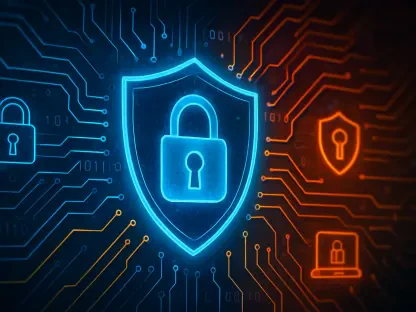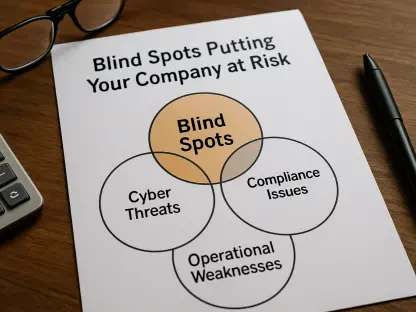Cybersecurity threats continue to evolve at an alarming rate, reflecting the growing sophistication and determination of cybercriminals. As organizations strive to stay one step ahead, understanding the current landscape and being prepared for emerging threats has never been more critical. This roundup will delve into expert insights, discussing various vulnerabilities, attacker tactics, and defense strategies that define today’s cybersecurity challenges.
Understanding the Evolving Cybersecurity Landscape
The sprawling and complex landscape of cybersecurity is marked by an array of threats and vulnerabilities appearing almost daily. Staying informed about these developments is crucial not just for organizations, but also for individuals seeking to protect their digital assets. Based on recent discussions from professionals, here are some key insights into the rapidly shifting security environment.
Microsoft and the Patch Tuesday Paradigm
The Impact of Microsoft’s Security Updates
Microsoft’s latest Patch Tuesday release showcases the vast range of vulnerabilities needing attention. Experts highlight that addressing all these vulnerabilities is essential to mitigating risks associated with active exploits. The data reveals a total of 125 patched vulnerabilities, demonstrating Microsoft’s effort to promptly rectify potential threats while balancing operational disruptions.
Analyzing Specific Vulnerabilities and Threats
Among the patched vulnerabilities, CVE-2025-29824 in the Windows CLFS Driver stands out due to its active exploitation. Cybersecurity analysts stress the real-world implications of such vulnerabilities, noting how attackers leverage these weaknesses to elevate privileges. This underscores the ongoing arms race between software vendors and cybercriminals, where timely patch management remains a crucial defense strategy.
The Rise of Financially Motivated Threat Actors
FIN7’s recent activities exemplify the evolving tactics of financially motivated threat actors. Used against compromised SharePoint sites, the Python-based Anubis backdoor is a sophisticated malware providing extensive control over infected systems. Professionals in the field draw attention to the convergence of ransomware and traditional cybercrime, highlighting the significant impact of such attacks on organizations, where financial motives drive these evolving strategies.
Scrutinizing Defense Measures: CSRF Tokens and Beyond
Investigating the use of CSRF tokens, experts concur that while these measures are recommended, they are not foolproof. CSRF vulnerabilities allow attackers to exploit users into performing unwanted actions on authenticated websites. Comparing various defense mechanisms, it becomes clear that evolving security practices and proactive strategies are necessary to combat these threats effectively.
The Commercialization of Ransomware
Ransomware-as-a-Service: A Game Changer?
The rise of RaaS operations like VanHelsing has been transformative for the cybersecurity landscape. Experts note that the democratization of ransomware attacks through RaaS models poses significant challenges to defenses. The widespread availability of such services necessitates collaborative efforts among organizations of all sizes to develop robust mitigation strategies.
The Transition of Espionage Groups to Ransomware
The shift of espionage groups such as RedCurl to deploying ransomware further reflects broader trends in cybercrime. Analysts provide insights into how this transition underscores the lucrative nature of ransomware. Despite the potential risks, the financial benefits associated with ransomware have prompted many groups to adapt their tactics, indicating a strategic evolution within the cybercrime ecosystem.
Supply Chain Attacks and Zero-Day Vulnerabilities
The Significance of Supply Chain Attacks
High-profile supply chain attacks, such as exploiting CVE-2025-2783 in Google Chrome, are a major security concern. Security professionals describe the mechanics of these sophisticated attacks and the challenges they pose. Emphasizing the need for securing entire supply chains, industry leaders recognize the importance of proactive strategies in response to such threats.
AI’s Dual Role in Cybersecurity
Artificial intelligence plays a dual role in the cybersecurity domain. On one side, attackers employ AI to enhance their techniques, refining phishing and social engineering campaigns. Conversely, AI supports defenders by bolstering anomaly detection and automating threat responses. Experts debate the future balance of AI in cybersecurity, highlighting the continuous technological evolution it entails.
Proactive Measures and Best Practices
Summarizing key insights, industry leaders stress the importance of robust and proactive defense strategies. Recommendations include continuous monitoring, timely patching, and staying updated on emerging threats. By adopting best practices and keeping abreast of the evolving cybersecurity landscape, organizations can strengthen their defense mechanisms against sophisticated attacks.
Looking Ahead: The Future of Cybersecurity
Professionals emphasize the critical need for vigilance in navigating the dynamic cybersecurity landscape. Predicting future developments, they suggest potential advancements and persistent challenges in the ongoing battle between attackers and defenders. Reinforcing the importance of robust security protocols, these insights serve as a call to action for organizations and individuals to remain proactive in their cybersecurity efforts.









